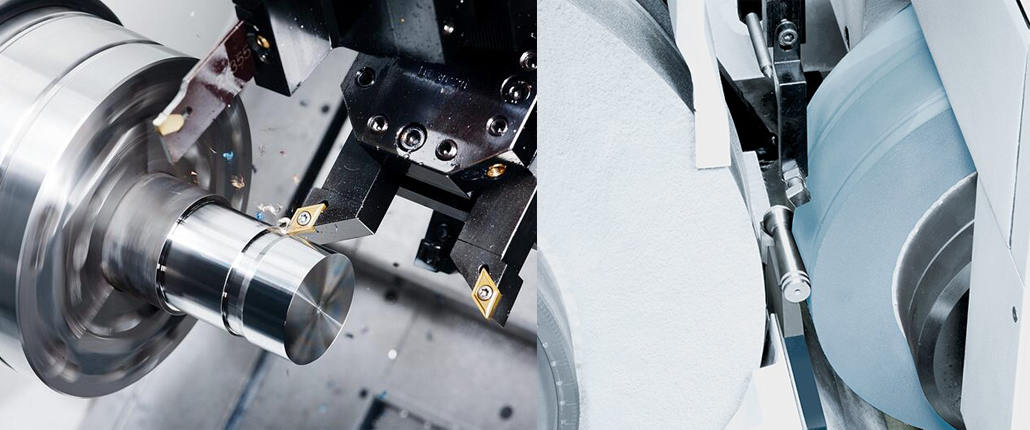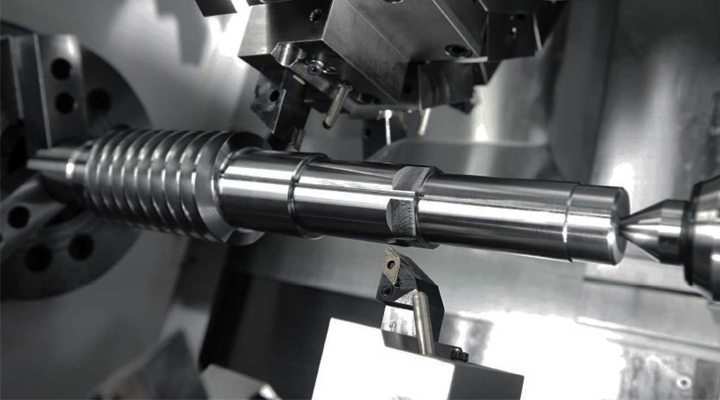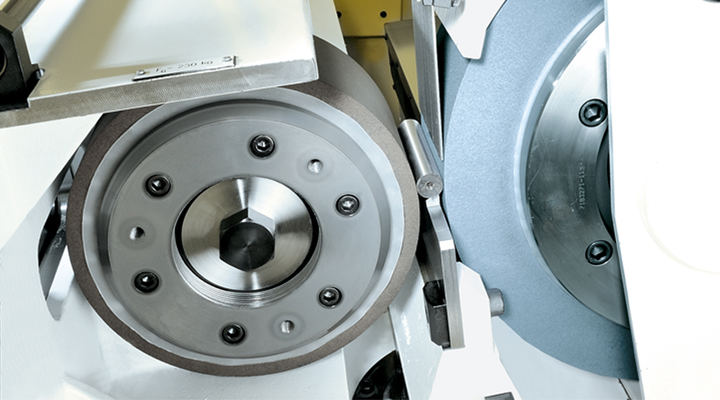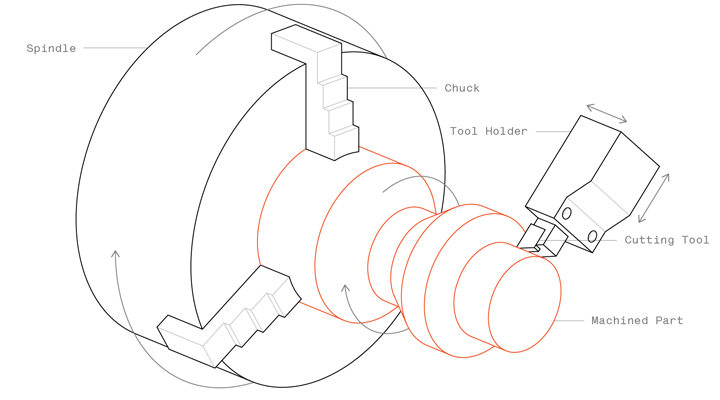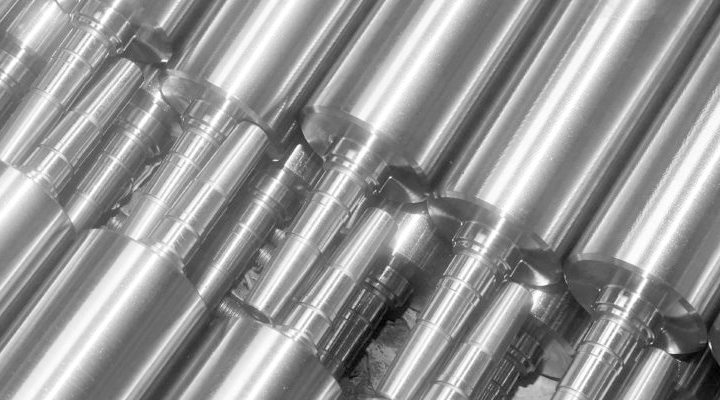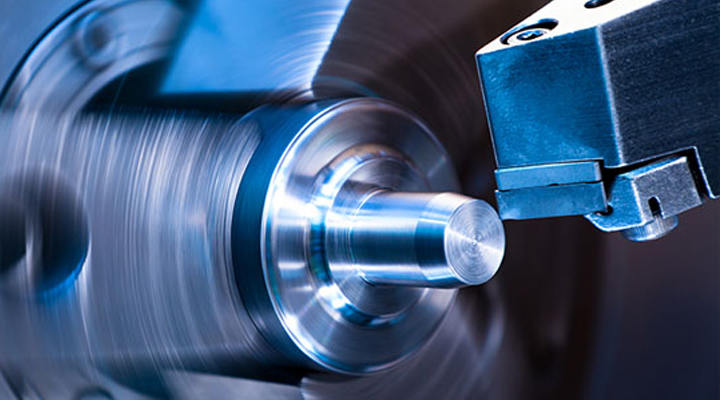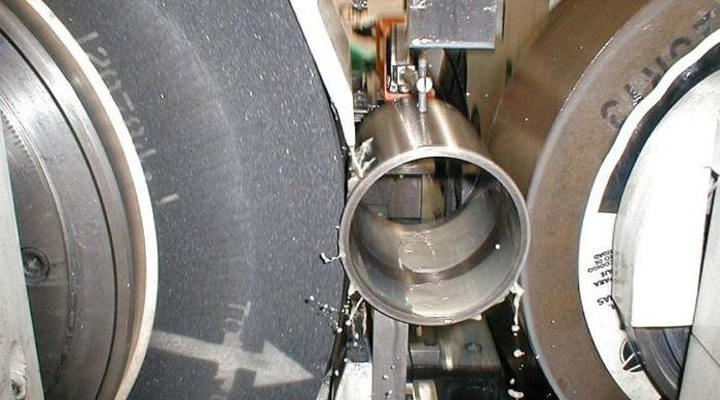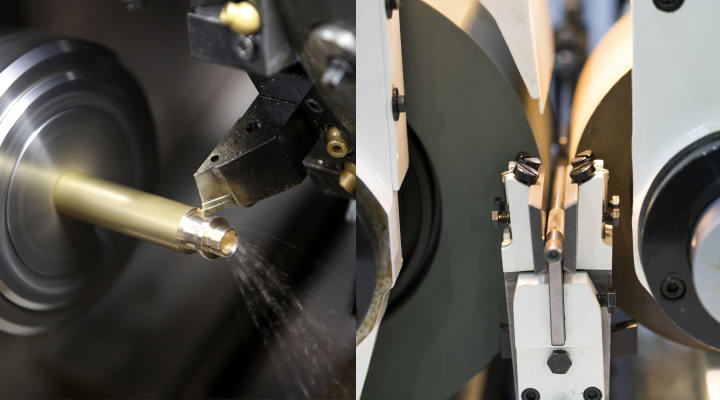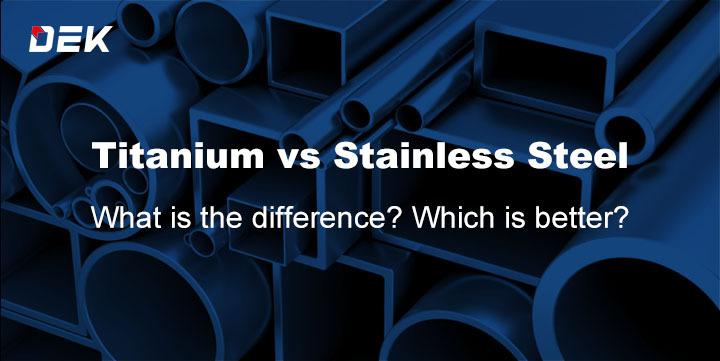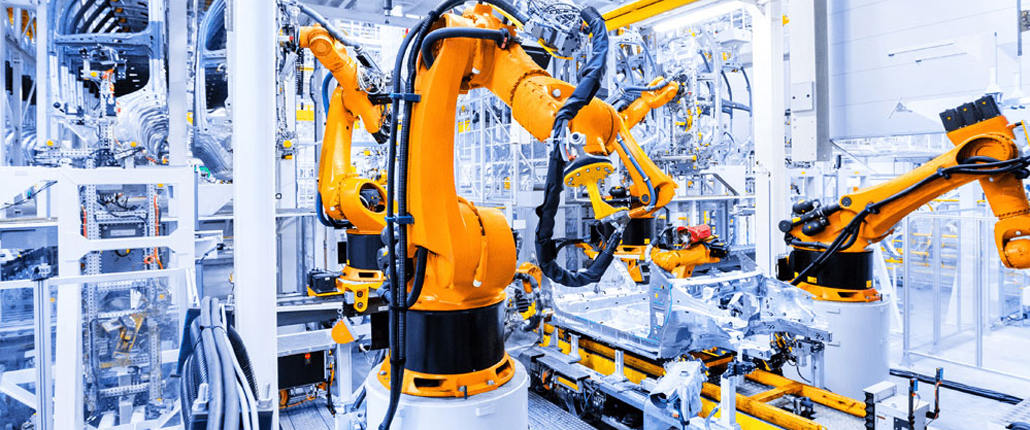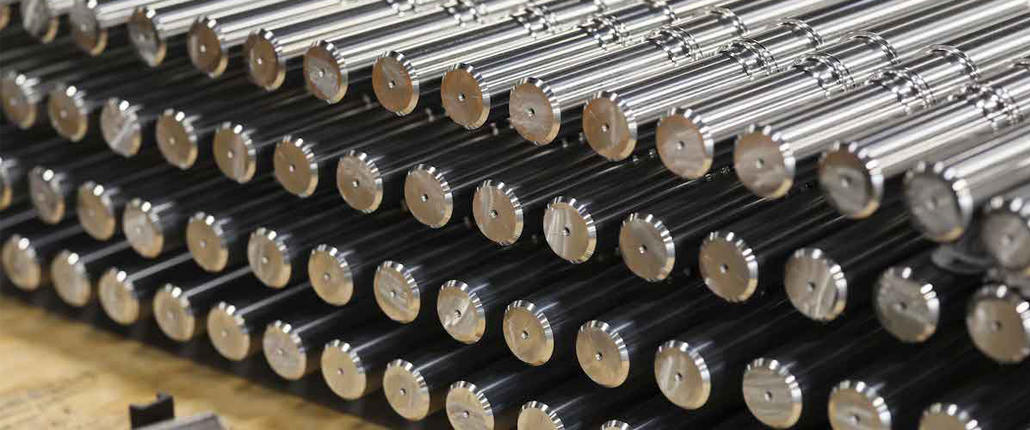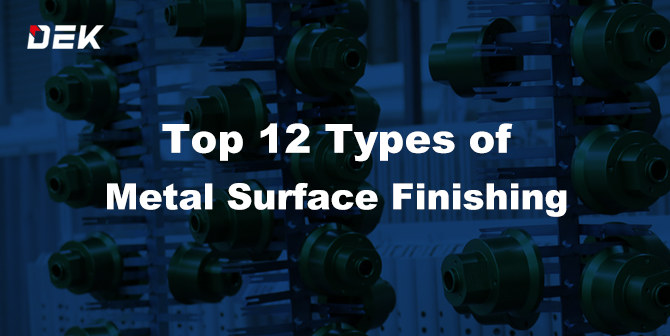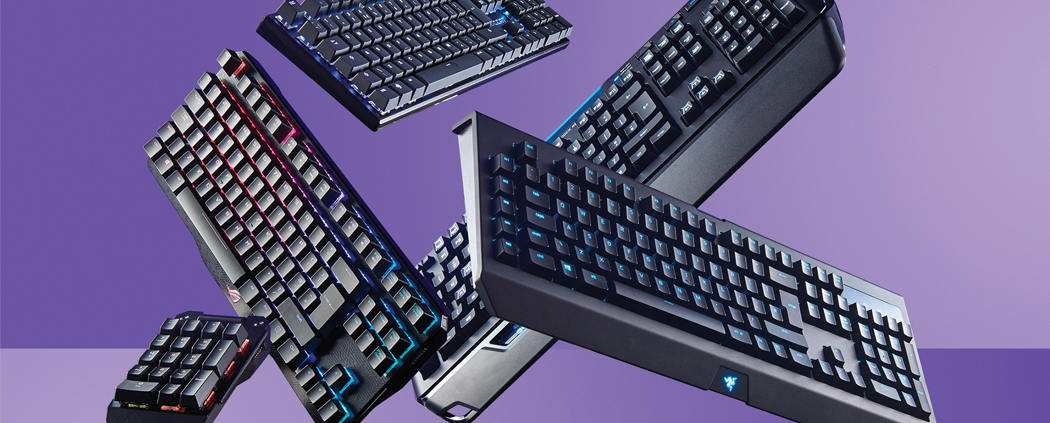CNC machining plays a vital role in developing custom machine parts in minimum lead time. In this article, we will discuss CNC turning vs Centerless grinding, what is the difference. Major features and applications for both processes are also discussed in this article.
DEK machining and manufacturing company is a well-esteemed manufacturer in developing various machine parts and prototypes. After reading this article, the reader will have complete basic knowledge of CNC turning and Centerless grinding. One will be able to choose between these two processes.
Difference between CNC turning and Centerless grinding
However, both processes are based on subtractive manufacturing, still there are some key differences between them. These differences will be discussed in this article below.
CNC turning
In CNC turning the workpiece (bar) is held in a fixed position by chuck, and is rotated at high speed against a cutting tool to decrease its diameter. The cutting tool is fed to the rotating workpiece with a velocity ‘v’. The movement of the cutting tool is conventionally in the X and Y plane, and it is controlled by servo motors. The computerized-numeric control (CNC) provides ultimate precision and accuracy.
Benefits and Applications
- CNC turning provides safety, as it removes human intervention from the process. This increases the production speed and efficiency is enhanced. The CNC turning makes the turning process cost-effective one achieves higher production in less time maintaining the precision.
- The time is saved when a tool change is required, in CNC turning it is done in no time without any hassle saving overall process time. Also when multiple tool change is required within the process.
- The CNC turning eliminates the human error chances. With the right turning speed and tool velocity, the tool life is increased, making the overall process cost-efficient.
- The job can be performed by a less skilled worker with limited supervision.
- A software upgrade can add improvement eradicating the need for part replacement.
- The CNC turning benefits in making toys, molds, prototypes, and furniture. It is also used to make automotive parts, SpaceX rockets, and insulation parts.
Centerless grinding
Centerless grinding is also a subtractive manufacturing technique. In this process, the material is held between two grinding wheels that rotate in one direction with variable speeds. One grinding wheel has a fixed axis and rotates to apply a downward force on the workpiece. CNC turning uses a non-abrasive tool while the centerless grinding tool uses abrasive grinding wheels.
Benefits and Applications
- CNC centerless grinding allows very precise regulation of the grinding wheel. It provides an accurate response to the force from the workpiece when pushed against grinding wheels.
- CNC centerless grinding has made profile dressing slides easier to manufacture with precise motion and control. It reduces the possibility of an accident as human intervention is not needed while operating.
- CNC grinding is advantageous over conventional grinding as it produces very light cuts and produces fine finish.
- The machine can work consistently for a longer period uninterruptedly.
- A software upgrade can add limited improvement eliminating the need for part replacement.
- Applications include transmission bushings, ceramic shafts for circulator pumps used in home heating, and ceramic shafts for circulator pumps used in aerospace fasteners.
How do they work?
As we know both machining operations are based on a similar manufacturing technique, but they differ in many aspects. A complete guide on both operations is given below.
CNC turning
In CNC turning the job is held fixed in a chuck that rotates it at high speeds. Once the CNC code is complete, it is loaded on the CNC panel, and the operation is started after ensuring the safety guard is on. While operating, the material is fed to the cutting tool. The cutting tools move linearly against the rotating material with a calculated velocity ‘v’.
The tool when meeting the workpiece removes the material to form the desired shape (following the CNC code). High precision and accuracy are achieved as the CNC machine operates in a closed-loop control mode. Coolant is continuously fed at the cutting point during operation.
CNC centerless grinding
CNC centerless grinding works on the principle of ‘material subtraction’. The workpiece is placed between the two abrasive wheels (tool). Out of two, one wheel has grinding characteristics and the other one is regulating wheel. The workpiece is supported by support beneath. CNC code is generated as per the design requirements and loaded into the CNC panel. The operation is started after configuring completes.
During grinding, a downward force is applied to the workpiece to push it against the support. The speed of the workpiece is determined by the regulating wheel. Grinding is done until the final part size is achieved. A grinding wheel is often fed against the workpiece. In centerless grinding, the workpiece tends to find its center upon initial contact.
Tools selection for CNC turning
The tool for the CNC turning operation is selected against the following parameters:
- Material of the workpiece
- Size and thickness of the workpiece
- Length and shape of the part
- The coating on the workpiece material
The most commonly used tool for CNC turning is made of High-Speed Steel (HSS) and solid carbide. The CNC turning tools come in various sizes and profiles used according to the type of job.
Tools selection for Centerless grinding
The tools for the centerless grinding operation are selected based on the following parameters:
- Material of the workpiece
- Thickness and size of the material
- The shape of the material
- The coating on the workpiece
The most commonly used tools for centerless grinding are made of a composite material consisting of coarse particle aggregate pressed and bonded together by cementing matrix. The grinding wheel comes in various sizes and profiles.
Advantages of CNC turning and CNC centerless grinding
CNC turning
Some of the advantages of CNC turning include:
- Short or large diameters, parts are machined with high precision within the tolerance.
- Production rate is increased when CNC turning in is performed.
- Mounting and demounting time are reduced.
- High operational stability is achieved through CNC.
- CNC turning eliminates chances of human error and thus production cost is reduced.
- Tool changing time is saved in case of CNC turning.
- Its computerized numerical control allows high repeatability and mass production capacity.
- It increases the tool life as it is used with a constant rated speed.
- Many other operations like facing, milling, threading, etc. can be performed with a CNC turning machine acquired.
CNC centerless grinding
Some of the advantages of the CNC centerless grinding are:
- The chances of human error are reduced, saving the production cost indirectly.
- It makes the grinding process easier and safer.
- Centerless grinding is done with a high surface finish owing to computerized numerical control.
- The production rate is increased with CNC centerless grinding compared to conventional grinding.
- Less floor space is required as more work can be done with a single CNC machine.
- With high operation stability, precision and accuracy are achieved grinding the workpiece within the tolerances.
- Tool life is increased when the tool is used with a constant and rated speed.
- It adjusted the force feedback to the workpiece while operating.
- With a high surface finish, no other finishing operations are required which in the conventional method are performed.
Which process should I use?
Above we have discussed salient features of both processes. The various parameters like size, type, and profile of the part contribute to the process selection. Design and machining requirements are also considered. If you want to achieve high volume with a simple design, then you should select CNC centerless grinding as it can produce parts with large diameters and lengths.
On the other hand, if you need to produce small parts with high repeatability, then you should select CNC turning.
Does DEK offer CNC turning and Centerless grinding services?
DEK machining and manufacturing company provides services in manufacturing high-quality parts through both CNC turning and CNC Centerless grinding. The company is equipped with modern technology to develop custom parts, according to the specific needs of the customers. If you are looking for any of these services then DEK should be your first choice.
Conclusion
In the above article, we have concluded that both CNC turning and CNC centerless grinding have their own benefits in certain conditions. Both machining operations are preferred as per feasibility and customers’ requirements. CNC turning is used for small, and intricate parts with high repeatability. On the other hand, CNC centerless grinding is used to produce parts with large diameters and lengths.
If you are looking for a CNC machining expert in your area then DEK will be the best fit for you. If you need any technical support regarding product development, you may also contact our engineers.
